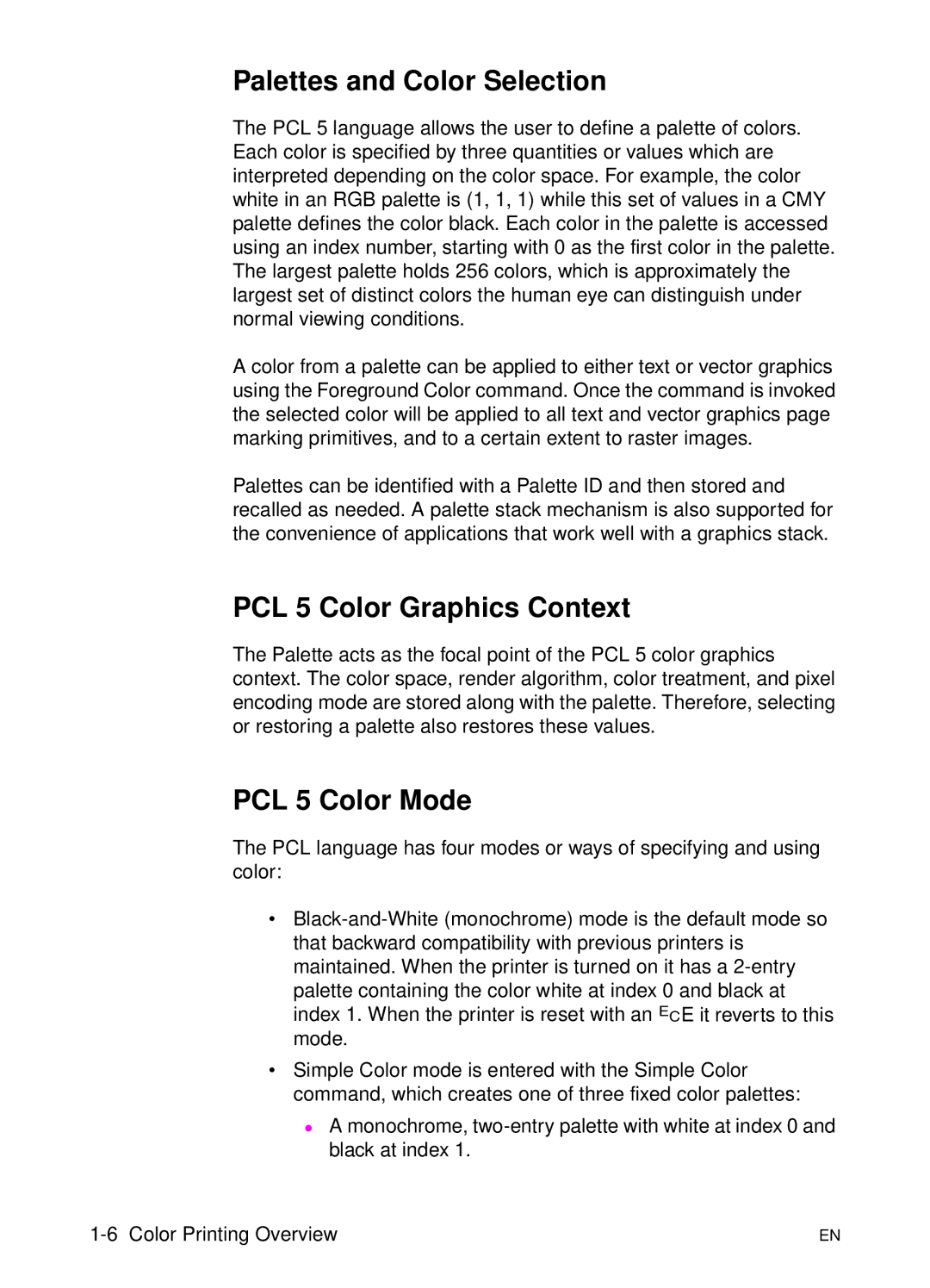Palettes and Color Selection
The PCL 5 language allows the user to define a palette of colors. Each color is specified by three quantities or values which are interpreted depending on the color space. For example, the color white in an RGB palette is (1, 1, 1) while this set of values in a CMY palette defines the color black. Each color in the palette is accessed using an index number, starting with 0 as the first color in the palette. The largest palette holds 256 colors, which is approximately the largest set of distinct colors the human eye can distinguish under normal viewing conditions.
A color from a palette can be applied to either text or vector graphics using the Foreground Color command. Once the command is invoked the selected color will be applied to all text and vector graphics page marking primitives, and to a certain extent to raster images.
Palettes can be identified with a Palette ID and then stored and recalled as needed. A palette stack mechanism is also supported for the convenience of applications that work well with a graphics stack.
PCL 5 Color Graphics Context
The Palette acts as the focal point of the PCL 5 color graphics context. The color space, render algorithm, color treatment, and pixel encoding mode are stored along with the palette. Therefore, selecting or restoring a palette also restores these values.
PCL 5 Color Mode
The PCL language has four modes or ways of specifying and using color:
•
•Simple Color mode is entered with the Simple Color command, which creates one of three fixed color palettes:
zA monochrome,
EN |
